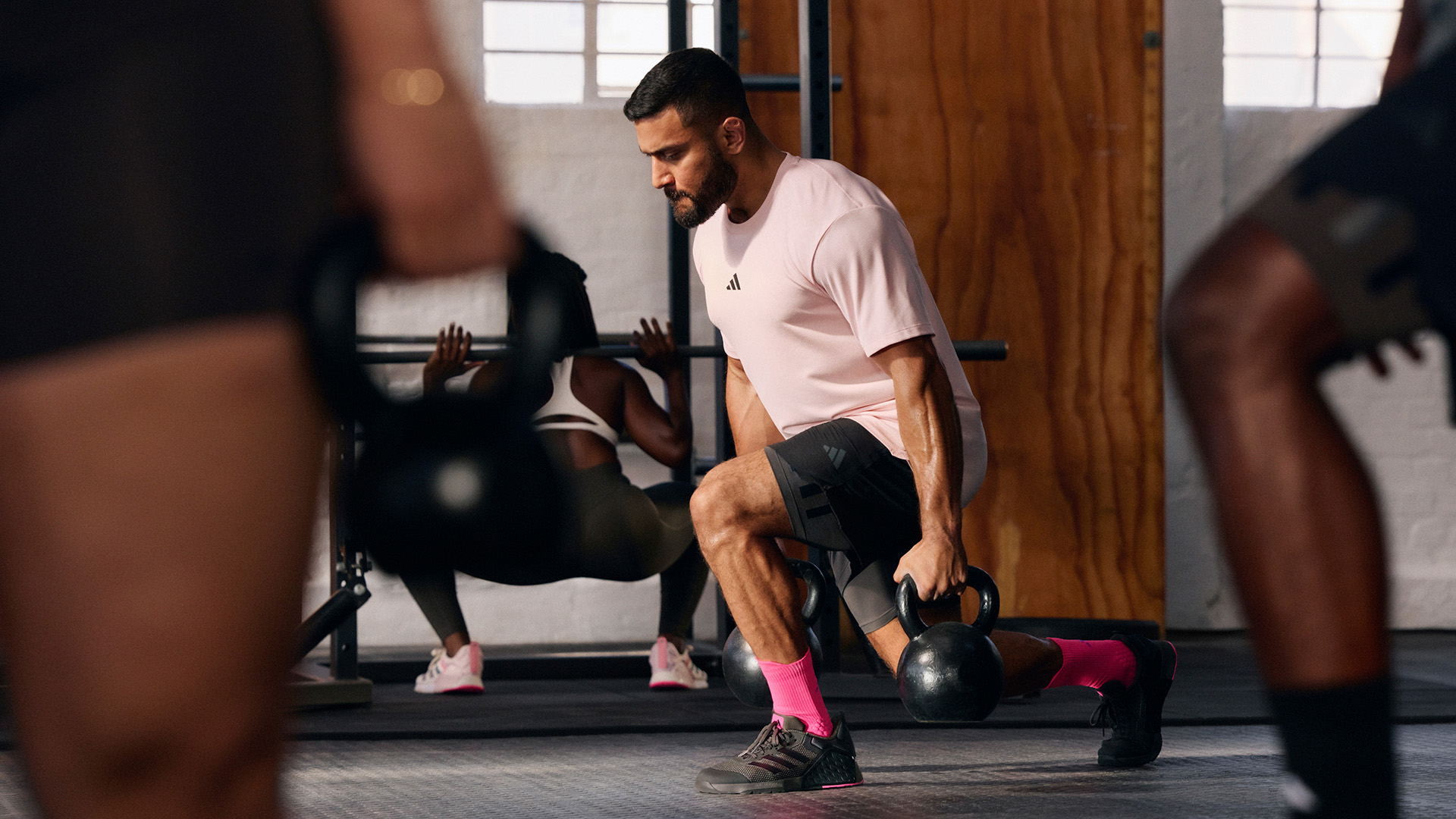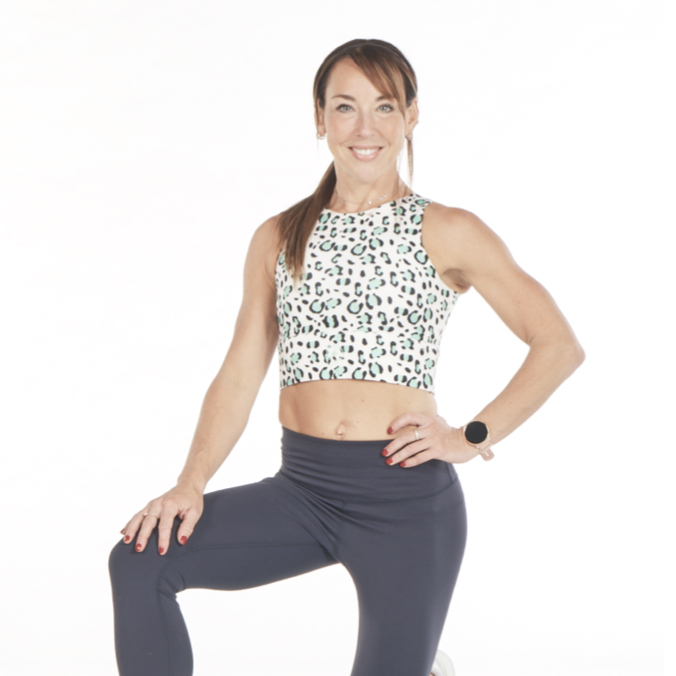6 kettlebell exercises every runner must include in their workouts to improve speed and stamina
Add these exercises to boost your running performance


Whether you’re training for your first 5K or a half marathon, running alone won’t build all the strength you need. Yes, hitting the pavement boosts your fitness and endurance, but you must incorporate strength training into your routine to unlock speed and strength and prevent injuries.
This kettlebell strength routine, designed by personal trainer, marathon runner, and author of Lift Yourself, Laura Hoggins, targets multiple movement patterns, hitting your glutes, hamstrings, quads, and core.
Whether you’re sprinting or tackling long-distance runs, adding kettlebells to the mix will help you run with more control, reduce injury risk, and give you a solid edge to run further with strong, balanced muscles and joints.
Benefits of strength training for runners
Running and strength training might not seem like an obvious match, but if you want to improve your performance and build a strong defence against potential injuries, aim to perform this kettlebell routine twice per week. Not only does research suggest that strength training can enhance cardiovascular health by reducing resting blood pressure, but it can also help strengthen bones and improve joint health and resilience—reducing the risk of injury.
6 essential kettlebell exercises to make you a stronger runner
To start, grab a set of the best kettlebells for you, making sure you pick a weight that challenges you but still lets you keep good form and posture. “As I always say, it’s not about speed, it’s about control,” says Hoggins. “If it doesn’t feel right, it probably isn’t, so don’t be afraid to reset or drop the weight if necessary.”
Runners Kettlebell Circuit 1
Perform all three moves back to back then take 60 seconds rest and repeat four times through.
KB Romanian Deadlift
Reps: 10-12
Sign up to the T3 newsletter for smarter living straight to your inbox
Get all the latest news, reviews, deals and buying guides on gorgeous tech, home and active products from the T3 experts
The Kettlebell Romanian Deadlift is perfect for hitting your posterior chain — particularly your hamstrings, glutes, and lower back. The key is the hip-hinge movement, so be sure to keep a soft bend in your knees and focus on hinging forward with your chest up, not down.
Stand with your feet about hip-width apart, toes pointing forward, and your kettlebell on the floor in front of you, directly between your feet. Bend slightly at your hips and knees to reach down and grab the kettlebell with both hands.
Engage your core as you hinge at your hips and push them back, keeping a slight bend in your knees. Keep the kettlebell close to your body as you lower it toward the floor.
Once you feel a deep stretch in your hamstrings (usually when your torso is about parallel to the floor or slightly above it), push through your heels to drive your hips forward and return to the starting position.
Focus on squeezing your glutes and engaging your hamstrings as you stand tall.
Reverse Lunge with Row
Reps: 10-12 (each side)
The reverse lunge with a row is perfect for strengthening your core, biceps, and back muscles, including your lats, rhomboids, traps, and rear deltoids. These muscles are key for maintaining good posture as you run. Plus, lunges are great for improving balance and coordination too.
Stand tall with your feet hip-width apart, holding a kettlebell in your left hand. Take a big step back with your right foot, lowering your body until both knees are bent at 90 degrees. Keep your left knee aligned with your ankle, and let your right knee hover just above the floor.
As you lower into the lunge, hinge forward slightly from your hips, keeping your back straight and chest open. From here, row the kettlebell up toward your ribs, keeping your elbows close to your body. Focus on engaging your lats and squeezing your shoulder blades together at the top of the row.
Push through your left heel to return to standing, bringing your right leg forward, and lower your left arm back down to your side.
Russian KB Swing
Reps: 15
The kettlebell swing is a classic all-rounder that will fully load your posterior chain with a dynamic twist to help develop explosive power. It’ll fire up your glutes, hamstrings, lower back, and core.
Position your kettlebell between your feet, maintaining a shoulder-width stance. Engage your core, hinge forward at the hips, send your glutes back, and grip the kettlebell with both hands using an overhand grip.
Keeping your back straight, swing the kettlebell back between your legs, then drive the bell upward to shoulder height as you push your hips forward and squeeze your glutes.
Control the descent of the bell as it comes back down between your legs, avoiding overextension or hyperextension in your back.
Runners Kettlebell Circuit 2
Split Squats
Reps: 10 (each leg)
Every kettlebell workout for runners should include lunges. Running involves a series of shallow lunges, so by incorporating the full lunge exercise, you’ll strengthen your glutes and quads, as well as improve your ankle stability and overall balance.
Hold the kettlebell in your right hand with your feet pointing straight ahead in a staggered stance—one leg in front of the other. Keeping your upper body straight, slowly bend your back knee toward the ground. When your back knee is about an inch from the floor, push through the heel of your front foot to stand back up. Repeat all reps on one leg before switching sides.
Goblet Squat
Reps: 15
Goblet squats are a powerhouse full-body move, targeting the key muscles that drive running mechanics—quads, glutes, calves, and core. They improve posture and movement patterns while also boosting flexibility in the calves and ankles.
Stand with your feet shoulder-width apart, toes slightly pointed out.
Hold the kettlebell close to your chest with both hands, elbows bent, and the weight resting between your chest and chin.
Engage your core and push your hips back as you bend your knees, keeping your chest lifted and your back neutral.
Lower your body into a squat, going as deep as your mobility allows—ideally until your thighs are parallel to the floor. Push through your heels to return to standing, driving your hips forward while squeezing your glutes. Keep the kettlebell close to your body at all times, with your elbows tucked in.
Beast Hold KB Drag
Reps: 10
The beast hold is a tough - yet fantastic move for building strength and stability in the core and shoulders. Core strength helps maintain good form and prevents your body from twisting side to side, which can be inefficient. This dynamic move is an anti-rotation exercise that stops that rotation while working the core and obliques.
Start on your hands and knees with the kettlebell to one side, just by your left hand. Stack your wrists under your elbows and place your knees slightly in from your hips (closer to your belly button). Raise both knees about an inch off the ground and hold the position by engaging your abs and packing your shoulders. Think about creating length in your spine, from your head to your hips.
Reach your right hand through to grab the kettlebell and bring it to the right side of your body. Place it down on the floor, followed by your right hand, then repeat on the left side. Lift your left hand, bring it under your body to grab the kettlebell, and bring it to the left side.
The key is to minimise movement through your body, aside from the arm pulling the kettlebell. Keep your hips and shoulders square to the ground, avoiding rotation.

Lucy Miller is a journalist, Level 3 Personal Trainer, Nutritional Advisor and Children’s Fitness Specialist. She holds fitness qualifications from NASM Training and Premier Training International and has been a fitness journalist and fitness (and cover) model for over 20 years. Since going freelance in 2014, Lucy left Men’s Fitness Magazine to write for an abundance of top consumer titles such as Women’s Health, Women’s Fitness, Waitrose, The Times, The Guardian and Runners World.
She’s also extremely passionate when it comes to educating others about health and physical activity and loves inspiring and working with children and adults to help make fitness fun, sustainable and accessible. In her spare time, Lucy is ever the sportswoman. Once a national gymnast, having won three national titles, she has also run a handful of marathons around the world and loves to test her physical and mental side with daily running and gym sessions, not to mention ballet, bootcamp, boxing and TRX.
You must confirm your public display name before commenting
Please logout and then login again, you will then be prompted to enter your display name.




